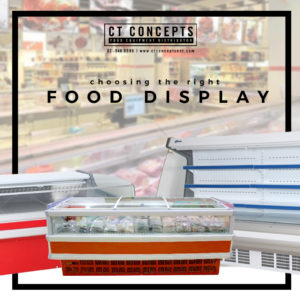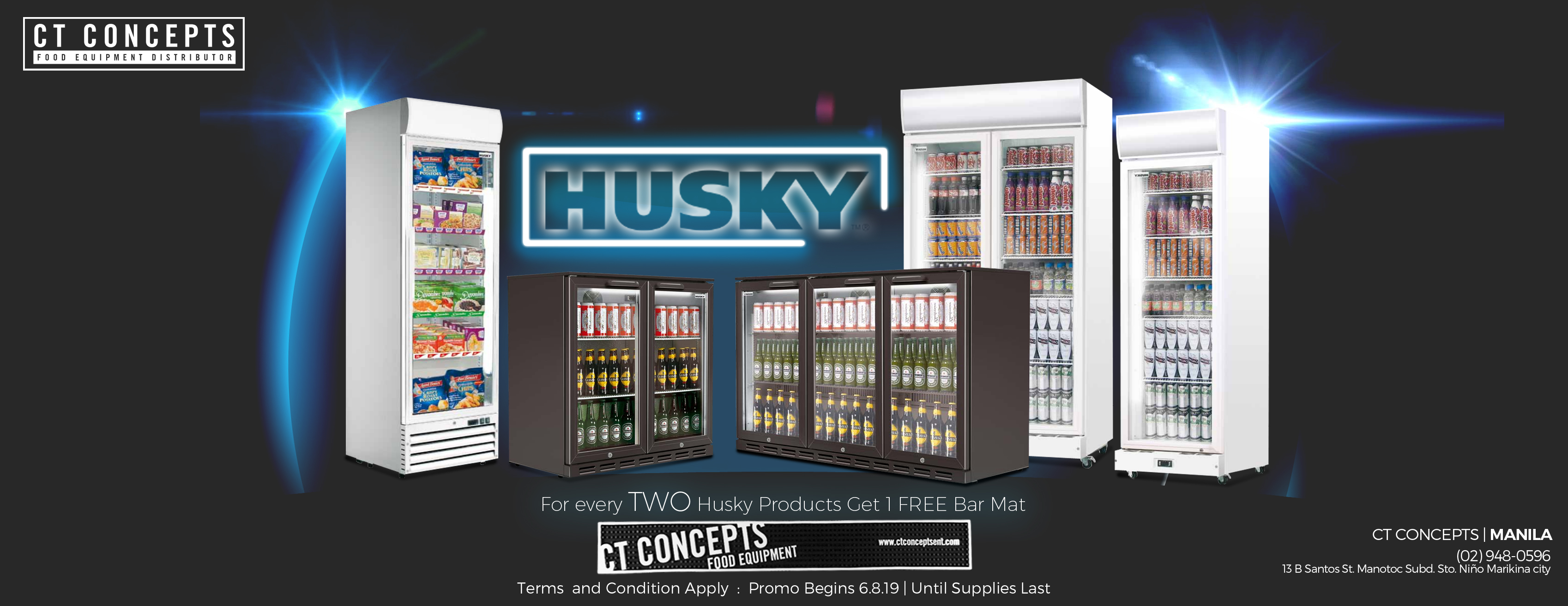Choosing the right Food Display
Selecting The Right Food Display Showcase
By Sean McGill – Last updated on 01/16/2017
Contrary to popular belief, there are actually quite a number of display Showcase options that populate the market, all of which are incredibly different. This wide variety of options can make it rather difficult for purveyors to pick out the right case. To make things easier, we have compiled a list of the primary kind of display Showcase and the important factors on deciding what display Showcase is right for your operation.
Types Of Display Showcase
There are a number of primary display Showcase types on the market that are intended for the foodservice industry. Here are the most common:
Meat & Seafood Showcase – Meat and seafood Showcase are refrigerated single level Showcase that hold just above freezing. They are intended to hold fresh meat, poultry and seafood at their ideal storage temperatures without allowing them to freeze. Glass Showcase are meant to house and shield unwrapped meat and fish (and are ideal for butcher shops or fish markets), however there are also a number of open-air models that are suited to house wrapped meat products in places like supermarkets. They almost always have frost inhibitors to prevent the glass from frosting, and since fish often rests on ice, seafood specific cases will often have trays to catch run-off water.
Deli Showcase – Deli Showcase are refrigerated display cases that have multiple shelves, and hold around 40° F. Delis require multiple shelves to display their products, and the cured meats and cheeses they sell should be kept further from freezing. These cases inherently retain moisture, which aids in keeping the product inside fresh. There are also some single shelf deli cases that are ideal for storing deli sides, such as pasta salad.
Bakery Showcase – There are both refrigerated and non-refrigerated Bakery Showcase. Refrigerated Bakery Showcase feature shelves and hold around the same temperature as Deli Showcase, however they tend to have less moisture (or even have adjustable humidity). These refrigerated Showcase are intended to house items such as pies, cakes, confections or other baked goods that may deteriorate quickly at room temperature. Non-refrigerated Deli Showcase are dry, and are intended to stay that way. Items including bread, bagels, or some baked dessert items should not be stored in moist climates. These items are usually prepared fresh daily and are better stored dry at room temperature. Additionally, there are refrigerated and non-refrigerated rotating displays for baked goods which are perfect for diners or other locations looking for an eye-grabbing way to display their desserts.
Hot Display Showcase– There are a number of heated Display Showcase on the market intended to hold prepared foods at proper temperatures for service. These glass Display Showcase can range in size from small countertop pizza or concession Showcase to large Deli Showcase sized floor models. Many manufacturers offer larger heated display Showcase with adjustable humidity control, giving end-users an adaptable showcase that can be filled with varying products. There are also a number of open-air heated displays as well that are intended to operate in self-serve style establishments such as convenience stores or cafeterias.
Sushi Display Showcase – Sushi display showcase are single shelf glass displays that can extend much longer than many other deli showcase . They only have one shelf, are significantly less tall than freestanding display showcase , and are intended to rest on a counter or bar. These display showcase can be either refrigerated or non-refrigerated, and can be built to custom specifications, should prefabricated models not suffice. Traditionally non-refrigerated showcase are the norm (depending on the climate the restaurant resides in), as most sushi bars will prepare rolls fresh throughout the day.
Combination Display Showcase – There are some display showcase that feature dual temperature zones. There are bakery showcase that feature a refrigerated zone and a dry non-refrigerated zone, and there are also showcase that feature a refrigerated zone on the bottom and a heated area above. These combination units can be ideal in instances where more than one display showcase may be necessary.
Open Display Showcase – These display showcase offer stocking opportunity for grab-n-go items, dairy, vegetables and other impulse purchases. They are great for produce departments or near registers.
Display showcase Considerations
When shopping for display showcase there are a number of important factors that need to be examined. Bearing in mind what you will be storing in your showcase will directly affect everything; here are the most important factors to examine while shopping.
Temperature – Temperature is one of the most important, if not the most important factor that determines what kind of showcase is best. It can be beneficial to examine primarily one of the aforementioned showcase by need (i.e. look at sushi showcase if you are housing sushi, a deli showcase for your deli, etc.), however there are still options within those categories. Knowing what you will be storing and the environment it will be stored in will help you choose the display showcase with the best temperature range. For example, a sushi showcase in a warm climate should opt for a refrigerated sushi showcase to maximize the shelf life of their rolls.
Humidity – As we earlier discussed, some products should be stored in humid environments, and others should not. Operations that have definite needs when it comes to humidity can easily find the ideal display showcase ; however those that change what their display holds frequently may need a showcase with adjustable humidity. There are many showcase with adjustable humidity, including refrigerated, non-refrigerated and heated, that allow humidity to be turned up or down with the turn of a dial, which are perfect in these instances.
Lighting – Display showcase are nearly all illuminated, however it is important to examine if the interior lighting that comes standard with the showcase your are eyeing up is sufficient. Some locations have lower levels of interior light which may make it difficult to view product, or conversely, the light may be too bright for the softly lit environment. Additional lights can be installed by some manufacturers per requests, or some bulbs can be removed or turned off to keep the display showcase from being too bright.
Size – Display showcase come in many sizes, and it is important to know where you want your showcase to rest, and the dimensions required to occupy that space. There are small countertop display showcase / merchandisers, and there are large floor model display showcase that can be 96” long or higher, so it is important to find one that is adequately sized to fit the desired product but that does not become a drain on energy costs. Additionally, it can be relatively unappealing to the eye to have a display showcase that looks empty or overly full, so sizing your display showcase to your business’ needs is important not only to your bottom line, but your aesthetic appeal as well.
Shelving – Shelving is important when choosing the proper display showcase because it can dramatically increase the storage capacity of a display showcase . Though it reduces the available height clearance of each shelf, most display showcase will not store items that are incredibly tall. Only in instances where this clearance is necessary (for example a bakery showcase storing a wedding cakes or a deli showcase that features tall signs) are these shelves superfluous.


